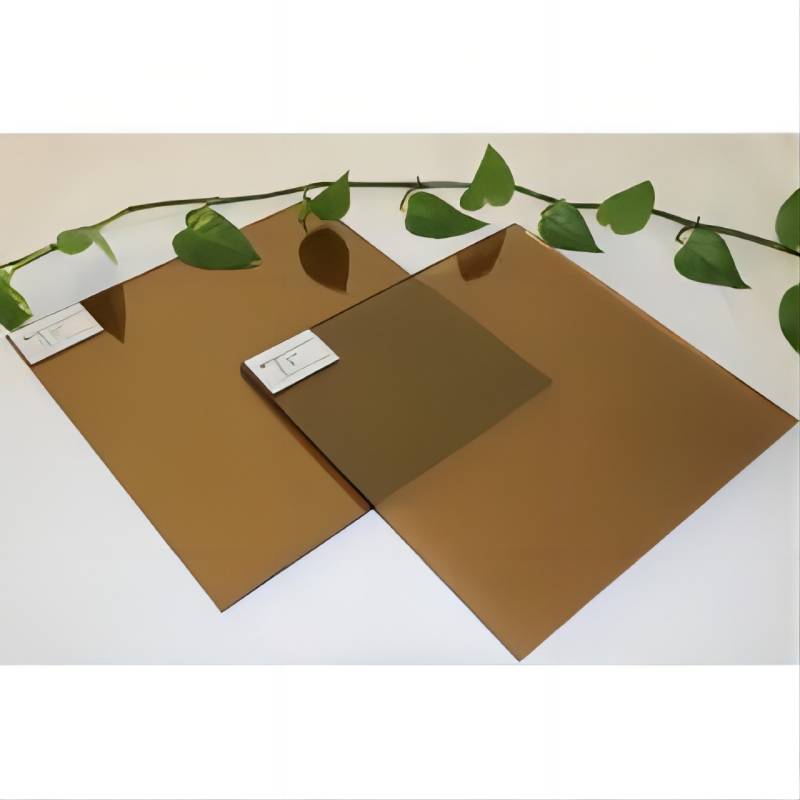The Process of Making Tempered Glass
Tempered glass, also known as toughened glass, is a type of safety glass that is treated with thermal and chemical processes to increase its strength compared to standard glass. The production of tempered glass involves several crucial steps, each contributing to its durability and safety features. This article will detail the process of making tempered glass, discussing the materials used, the heating and cooling techniques involved, and the applications of the finished product.
Raw Materials
The journey of tempered glass begins with the selection of raw materials. The primary material used is silica sand, which is combined with soda ash, limestone, and other additives to create a glass batch. The quality of the raw materials significantly affects the final product. For instance, the purity of the silica affects the clarity of the glass, while the composition can influence its thermal and mechanical properties. The glass batch is mixed thoroughly and melted in a furnace at temperatures ranging from 1,600 to 1,700 degrees Celsius (2,912 to 3,092 degrees Fahrenheit).
Melting Process
Once the raw materials are melted, they transform into a molten glass form. During this process, it is essential to remove any air bubbles and impurities. This is achieved by stirring the molten glass and maintaining a controlled environment in the furnace. Once the glass is homogeneous and free of blemishes, it is ready for the next stage of production.
Forming the Glass
The molten glass is then shaped into flat sheets through a process known as the float method or by pressing it into molds. In the float method, the molten glass is poured onto a bath of molten tin, where it spreads out and forms a smooth surface, ensuring uniform thickness. The thickness of the glass can vary depending on the intended application, usually ranging from 4mm to 19mm (0.15 inches to 0.75 inches).
Annealing
After the glass is formed, it undergoes a process called annealing. This step involves slowly cooling the glass to relieve any internal stresses that may have built up during the forming process. Annealed glass is more prone to breaking when subjected to sharp impacts or changes in temperature. Therefore, the next step in the process—tempering—is vital for enhancing the glass’s strength.
process of making tempered glass
Tempering Process
The tempering process itself is where the glass gains its characteristic strength. The formed and annealed glass is heated in a tempering furnace to temperatures between 600 and 700 degrees Celsius (1,112 and 1,292 degrees Fahrenheit). This heating causes the surface of the glass to expand while the interior remains at a lower temperature.
Once the glass reaches the appropriate temperature, it is rapidly cooled, a process known as quenching. This rapid cooling creates compressive stresses on the surface of the glass while tensile stresses remain in the core. These internal stresses give tempered glass its increased strength and make it more resistant to impact. Importantly, if tempered glass does break, it shatters into small, blunt pieces rather than sharp shards, reducing the risk of injury.
Quality Control
Throughout the entire production process, rigorous quality control measures are implemented. These include inspecting the glass for flaws, measuring its thickness, and testing its strength. Advanced technology, such as laser measuring tools and automatic defect detection systems, helps ensure that only the highest quality tempered glass is delivered to customers.
Applications
Tempered glass is widely used in various applications due to its strength and safety features. It is commonly used in automobile windows, shower doors, glass doors and tables, and facades. Additionally, its aesthetic appeal makes it a popular choice in modern architecture, where large glass panels are often employed for their breathtaking views and natural light.
Conclusion
The process of making tempered glass is a complex and meticulously controlled operation that transforms raw materials into a product known for its exceptional strength and safety. From melting and forming to tempering and quality control, each stage plays a crucial role in producing tempered glass that meets the demands of modern applications. As technology advances, the techniques and efficiencies in the glass manufacturing process continue to evolve, ensuring that tempered glass remains a reliable choice in a variety of settings.
 Afrikaans
Afrikaans  Albanian
Albanian  Amharic
Amharic  Arabic
Arabic  Armenian
Armenian  Azerbaijani
Azerbaijani  Basque
Basque  Belarusian
Belarusian  Bengali
Bengali  Bosnian
Bosnian  Bulgarian
Bulgarian  Catalan
Catalan  Cebuano
Cebuano  Corsican
Corsican  Croatian
Croatian  Czech
Czech  Danish
Danish  Dutch
Dutch  English
English  Esperanto
Esperanto  Estonian
Estonian  Finnish
Finnish  French
French  Frisian
Frisian  Galician
Galician  Georgian
Georgian  German
German  Greek
Greek  Gujarati
Gujarati  Haitian Creole
Haitian Creole  hausa
hausa  hawaiian
hawaiian  Hebrew
Hebrew  Hindi
Hindi  Miao
Miao  Hungarian
Hungarian  Icelandic
Icelandic  igbo
igbo  Indonesian
Indonesian  irish
irish  Italian
Italian  Japanese
Japanese  Javanese
Javanese  Kannada
Kannada  kazakh
kazakh  Khmer
Khmer  Rwandese
Rwandese  Korean
Korean  Kurdish
Kurdish  Kyrgyz
Kyrgyz  Lao
Lao  Latin
Latin  Latvian
Latvian  Lithuanian
Lithuanian  Luxembourgish
Luxembourgish  Macedonian
Macedonian  Malgashi
Malgashi  Malay
Malay  Malayalam
Malayalam  Maltese
Maltese  Maori
Maori  Marathi
Marathi  Mongolian
Mongolian  Myanmar
Myanmar  Nepali
Nepali  Norwegian
Norwegian  Norwegian
Norwegian  Occitan
Occitan  Pashto
Pashto  Persian
Persian  Polish
Polish  Portuguese
Portuguese  Punjabi
Punjabi  Romanian
Romanian  Russian
Russian  Samoan
Samoan  Scottish Gaelic
Scottish Gaelic  Serbian
Serbian  Sesotho
Sesotho  Shona
Shona  Sindhi
Sindhi  Sinhala
Sinhala  Slovak
Slovak  Slovenian
Slovenian  Somali
Somali  Spanish
Spanish  Sundanese
Sundanese  Swahili
Swahili  Swedish
Swedish  Tagalog
Tagalog  Tajik
Tajik  Tamil
Tamil  Tatar
Tatar  Telugu
Telugu  Thai
Thai  Turkish
Turkish  Turkmen
Turkmen  Ukrainian
Ukrainian  Urdu
Urdu  Uighur
Uighur  Uzbek
Uzbek  Vietnamese
Vietnamese  Welsh
Welsh  Bantu
Bantu  Yiddish
Yiddish  Yoruba
Yoruba  Zulu
Zulu 

